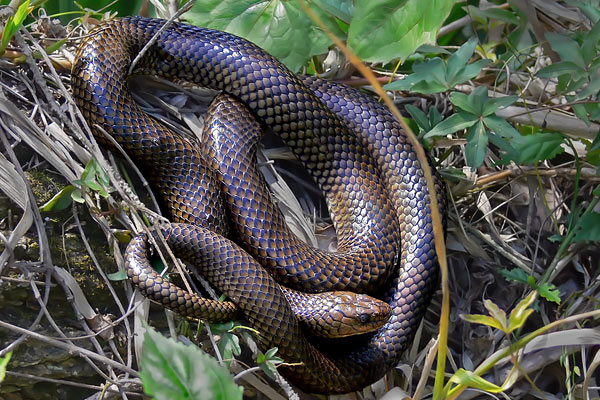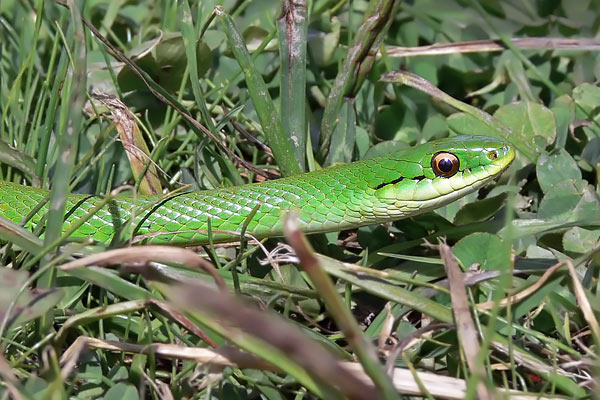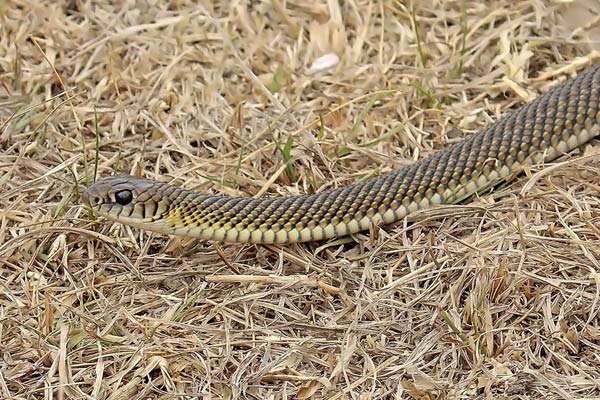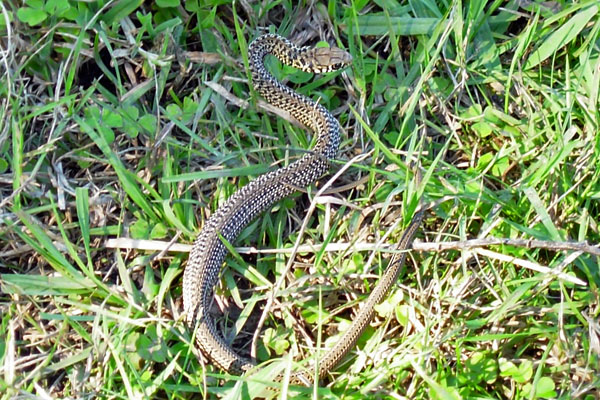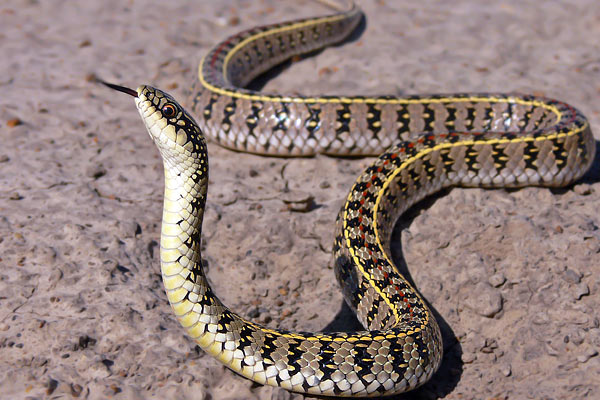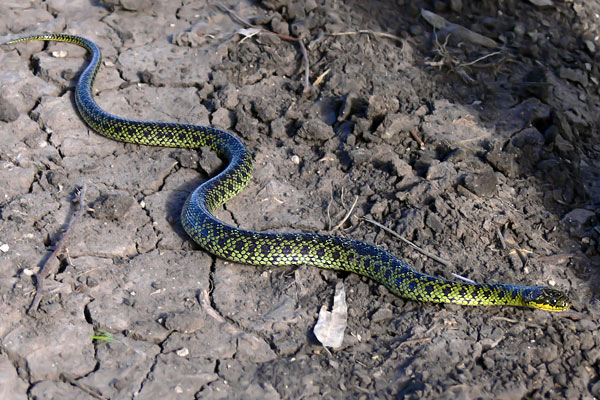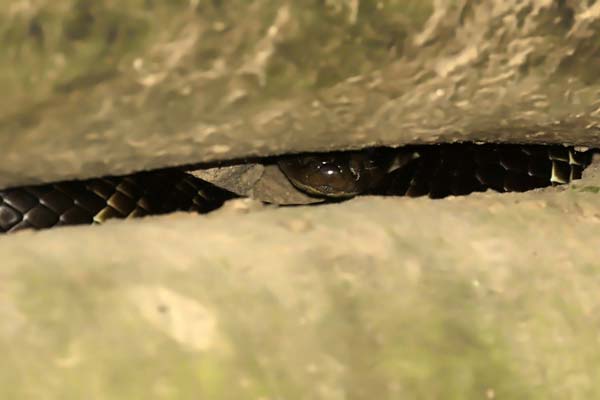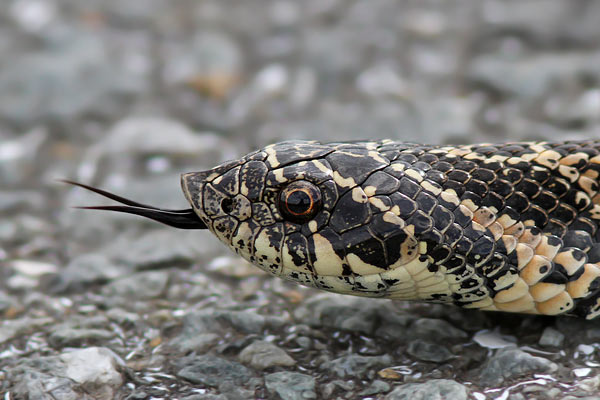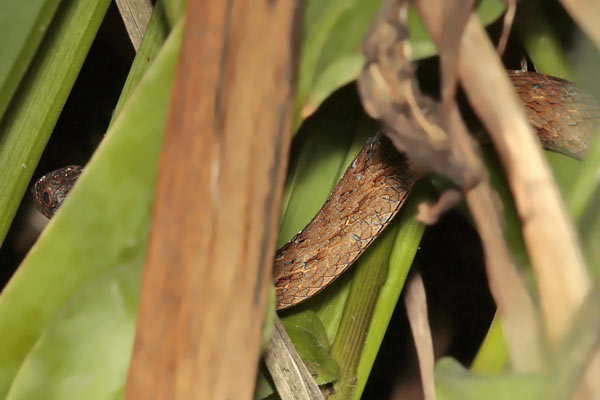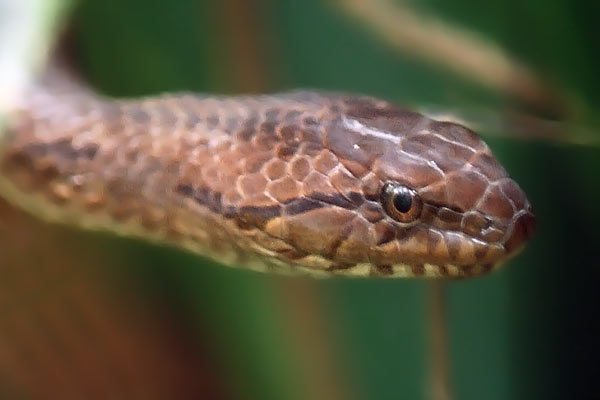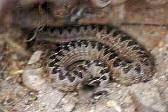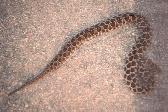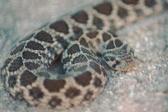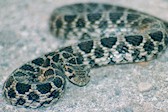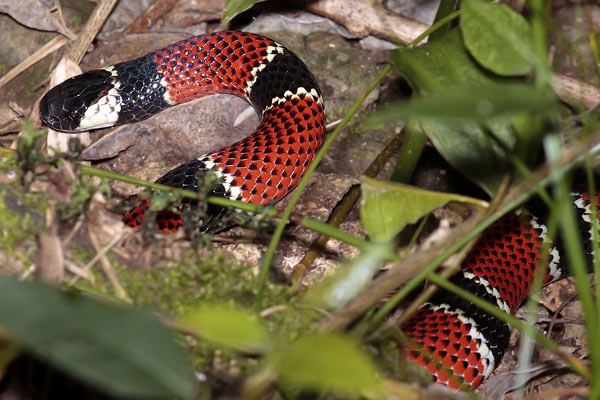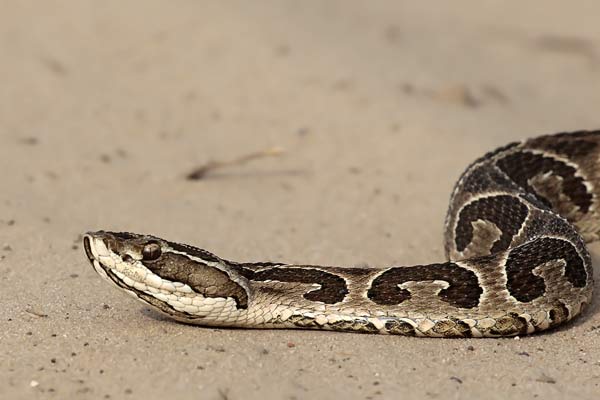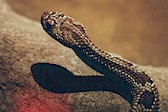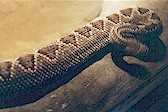 |
fotos
de animales silvestres de
ARGENTINA
|
 |
||
|
|
por / by: Alec
Earnshaw |
|||
|
photos
of wild animals of ARGENTINA
|
||||
|
Serpientes / Serpents
|
(Debes tener en cuenta que existen muchas otras especies no representadas en este sitio web)
Photos of some snakes of Argentina
TODAS LAS FOTOS DE ESTE SITIO WEB SON POR A. EARNSHAW - ALL PHOTOS IN THIS WEBSITE TAKEN BY A. EARNSHAW
(c) Alec Earnshaw 1992-2022
Contenido: / Contents:
|
|
Clase
|
Subclase
|
Orden
|
Suborden
|
Superfamilia
|
Familia
|
Subfamilia
|
|
Class
|
Subclass
|
Order
|
Suborder
|
Superfamily
|
Family
|
Subfamily
|
|
REPTILIA
|
LEPIDOSAURIA
|
SQUAMATA
|
OPHIDIA
(Serpentes)
|
HENOPHIDIA
|
BOIDAE
|
|
|
Víboras
- Snakes
|
=Boidea
|
|
Boa de las Vizcachers
(Ampalagua, Lampalagua) Boa constrictor occidentalis Philippi 1873 Boa Constrictor |
|
En cuativerio - Zoo de Buenos Aires
Captive - Buenos Aires Zoo 1/2004 |
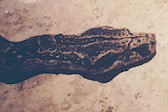
|
Clase |
Subclase |
Orden |
Suborden |
Superfamilia |
Familia |
Subfamilia |
Class |
Subclass |
Order |
Suborder |
Superfamily |
Family |
Subfamily |
REPTILIA |
LEPIDOSAURIA |
SQUAMATA |
OPHIDIA
(Serpentes) |
XENOPHIDIA |
COLUBRIDAE |
|
Víboras
- Snakes |
=Colubroidea =Caenophidia |
Culebras Grass Snakes |
Culebra Parda de Agua (o Común)
Erythrolamprus semiaureus Swamp Snake, Military Ground Snake Inofensiva, no es venenosa - Not venomous |
Panasonic Lumix FZ30 + DMW-LT55 teleconverter 1.7x |
Reserva Ecológica Ribera Norte, Buenos Aires - 4-10-2008
|
Ver
más fotos de esta especie See more photos of this species |
||
Culebra Verde
Philodryas aestivus - Dumeril, Bibron & Dumeril, 1854 Philodryas aestivus subcarinatus - (Boulenger, 1902) Brazilian (or Common) Green Racer - (AKA Green Tree Snake) ¡Posiblemente venenosa! - Possibly venomous! |
Panasonic Lumix FZ30 |
Reserva Natural Otamendi, Buenos Aires -8-10-2006
|
Ver
más fotos de esta especie See more photos of this species |
||
Philodryas olfersii
Lichtenstein's Green Racer - (South American green racer, eastern green whiptail) Levemente venenosa - Slightly venomous |
Canon EOS 7D Mk II + Canon Zoom 100-400 F 4:5 - 5.6 L IS II USM + Canon Speedlite 580EX II flash |
Bio-Reserva Karadyá, Andresito, Misiones - 3-7-2016
|
Culebra del Pastizal (o "del Alfa")
Philodryas patagoniensis (Girard, 1854) Patagonia Green Racer Guaraní: Nuasó Levemente venenosa - Slightly venomous |
Canon EOS 7D Mk II + Canon 100-400 f/4:5-5.6 L IS II USM + Extender EF III 1.4x |
Ceibas, Entre Ríos - 1-04-2018 |
JUVENIL - JUVENILE
|
Nikon E4200 |
Ñancay, Ceibas, Entre Ríos - 16-4-2005
|
|
|
||
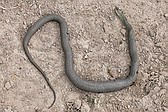
|

|
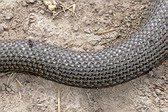
|
Culebra Listada
Lygophis anomalus (GUNTHER, 1758) Bicolored Swamp Snake - AKA Military Ground Snake No es venenosa - Not venomous |
Panasonic Lumix FZ30 + DMW-LT55 teleconverter 1.7x |
Ceibas, Entre Ríos - 3-12-2007
|
Ver
más fotos de esta especie See more photos of this species |
||
Culebra de Lema
Lygophis dilepis - Cope 1862 Lema's Ground Snake - AKA Lema's Striped Snake No es venenosa - Not venomous |
Canon EOS 7D Mk II + Canon 100-400 f/4:5-5.6 L IS II USM + Extender EF III 1.4x |
Establecimiento Los Picazos, Tres Marías, Formosa - 25-10-2019
|
Culebra Verde
y Negra o Ñandurié
Erythrlamprus poecilogyrus sublineatus Cope, 1869 or Wied, Neuwied, 1825 Yellow-bellied Liophis No es venenosa - Not venomous |
Panasonic Lumix FZ30 + DMW-LT55 teleconverter 1.7x + Flash |
Perdices, Entre Ríos - 27-02-2010
|
Ver
más fotos de esta especie See more photos of this species |
||
Culebra de los Esteros
Helicops infrataeniatus, JAN, 1865 |
Canon EOS 7D + Canon 300mm f/4 L IS + Extender EF III 1.4x |
Reserva Ecológica Ribera Norte, Buenos Aires - 31-08-2013
|
Ver
más fotos de esta especie See more photos of this species |
||
Ñacaniná de Bañado
Hydrodynastes gigas False Water Cobra - AKA Brazilian Smooth Snake No es venenosa, pero algunos ejemplares pueden ser agresivos y mordedores, manteniendo la mordida y inyectando un leve tóxico Not venomous. However some individuals may be agressive, seek to bite, and hold the bite for long, injecting a mild toxic. |
Canon EOS 7D Mk II + Canon 100-400 f/4:5-5.6 L IS II USM + Extender EF III 1.4x + Canon Speedlite 580EX II flash |
Laguna Oca, Formosa - 19-10-2019
|
Falsa Coral
Oxyrhopus rhombifer rhombifer, DUMÉRIL, BIBRON & DUMÉRIL, 1854 Diamondback Flame Snake Hallada muerta en el camino - Roadkill |
Canon EOS 7D + Canon 300mm f/4 L IS + Extender EF III 1.4x |
Perdices, Entre Ríos - 24-11-2013
|
Ver
más fotos de esta especie See more photos of this species |
||
Falsa Yarará
"Picuda" o Falsa Yarará Ñata
Xenodon dorbigny - (Duméril, Bibron & Duméril, 1854) South American Hognose Snake Moderadamente venenosa - Moderately venomous |
Canon EOS 7D + Canon 300mm f/4 L IS + Extender EF 1.4x III |
Pila, Buenos Aires - 2-04-2014
|
Ver
más fotos de esta especie See more photos of this species |
||
Culebra Ojo de
Gato
Thamnodynastes hypoconia - Cope, 1860 Keeled Sepia Snake Moderadamente venenosa - Moderately venomous |
Canon EOS 7D Mk II + Canon 100-400 f/4:5-5.6 L IS II USM + Extender EF III 1.4x + Canon Speedlite 580EX II flash |
Reserva Ecológica Ribera Norte, Buenos Aires - 23-04-2017
|
|
|
||
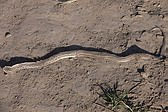
|
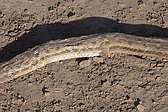
|

|
Ceibas, Entre
Rios - 1/2010 - Hallada muerta - Roadkill |
||

|
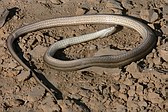
|
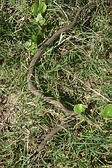
|
Ceibas, Entre
Rios - 1/2010 - Hallada muerta - Roadkill |
||
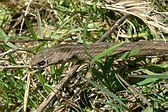
|
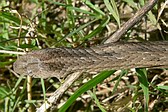
|
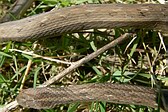
|
Culebra Manchada o Culebra Ojo de Gato - Culebra Sepia
Thamnodynastes strigatus - Günther, 1858 Coastal House Snake Moderadamente venenosa - Moderately venomous |
Canon EOS 3000 + Canon zoom 38-76mm F4.5-5.6 |
Reserva Ecológica Ribera Norte, Buenos Aires - 01-2004
|
Ver
más fotos de esta especie See more photos of this species |
||
Clase |
Subclase |
Orden |
Suborden |
Superfamilia |
Familia |
Subfamilia |
Class |
Subclass |
Order |
Suborder |
Superfamily |
Family |
Subfamily |
REPTILIA |
LEPIDOSAURIA |
SQUAMATA |
OPHIDIA
(Serpentes) |
XENOPHIDIA |
ELAPIDAE |
|
Víboras
- Snakes |
=Colubroidea =Caenophidia |
Corales, Cobras Corals, Cobras |
Coral Roja y Negra
Micrurus corallinus ¡Muy venenosa! - Highly venomous! |
Canon EOS 7D Mk II + Canon Zoom 100-400 F 4:5 - 5.6 L IS II USM + Extender EF III 1.4x + Canon Speedlite 580EX II flash |
Bio-Reserva Karadyá, Andresito, Misiones - 4-7-2016
|
|
Clase
|
Subclase
|
Orden
|
Suborden
|
Superfamilia
|
Familia
|
Subfamilia
|
|
Class
|
Subclass
|
Order
|
Suborder
|
Superfamily
|
Family
|
Subfamily
|
|
REPTILIA
|
LEPIDOSAURIA
|
SQUAMATA
|
OPHIDIA
(Serpentes)
|
XENOPHIDIA
|
VIPERIDAE
|
Crotalinae
|
|
Víboras
- Snakes
|
=Colubroidea
=Caenophidia |
Víboras
Snakes |
|
Yarará
Chica
Bothrops neuwiedii Wagler 1824 Yayará Pit Viper ¡Muy venenosa! Very venomous! |
|
Hallada muerta - Found dead
Reserva Provincial "El Loro Hablador", El Impenetrable, Chaco - 8/2002 |

|
Pero otras víboras son más venenosas.
Due to its abundance, this Pit Viper is the snake that causes most "accidents" in the north of Argentina.
But other species are more poisonous.
Yarará
Grande (también conocida como Víbora de la Cruz)
Bothrops alternatus - (Duméril &Bíbron, 1854) Urutu pit viper, or Parker's pit viper ¡Muy venenosa! - Highly venomous! |
Canon EOS 7D Mk II + Canon 100-400 f/4:5-5.6 L IS II USM + Canon Speedlite 580EX II flash |
Ceibas, Entre Ríos - 1-04-2018
|
Ver
más fotos de esta especie See more photos of this species |
||
| QUE
HACER EN CASO DE UNA PICADURA DE VIBORA: - Lave la herida, pero no realice ninguna otra manibra: NO realizce torniquete, NO realice cortes ni succione la herida. (De hacer un torniquete el veneno se mantiene concentrado en el miembro, y puede comprometerlo muy seriamente.) - Mantenga la calma del paciente. - Llegue con urgencia al centro médico más próximo. Si se trata de una víbora venenosa, el único tratamiento es la aplicación del suero antiofídico específico para el tipo de víbora (es decir, coincidente con la especie que causó el accidente). Existen sueros bivalentes y polivalentes que se aplican cuando no se conoce cual fue la especie que causó el accidente. - Intentar capturar la víbora puede ser muy peligroso y una mala maniobra puede causar otro accidente. Si es posible dedique un minuto a fotografiar, recordar o dibujar el diseño de las marcas en el dorso del animal. ¿Tiene cascabel en la cola? ¿El cuello es marcado? Si tiene anillos anote cuidadosamente la secuencia de colores ya que este dato separa la coral verdadera de las falsas corales. Si el animal está muerto, llevarlo al hospital junto con el paciente, tomando toda clase de precauciones: podría estar simulando estar muerto, y las estructuras preparadas para la inoculación de veneno pueden herir y aún provocar inoculación de veneno remanente. - Para llegar al centro asistencial es importante minimizar todo ejercicio del paciente. - Conviene que el paciente tome bastante agua (para no deshidratarse). - Para las víboras más ponsoñozas (Yarará, Cascabel, Coral) el tiempo urge realmente. Mientras antes se aplique el antídoto, mejor será la recuperación del accidentado. - Tenga en cuenta que muchas culebras pueden ser mordedoras, sin que por ello sean ponsoñozas. Por otro lado algunas culebras son parcialmente ponsoñozas y pueden inocular leves dosis de veneno, por lo que no subestime la situación, especialmente en chicos pequeños. Además la mordedura puede transmitir enfermedades (tétanos) por lo que siempre es recomendable acudir de inmediato al médico. - Al decidir el centro asistencial al cual se dirige busque confirmar la disponibilidad de suero antiofídico (de nada sirve llegar si el botiquín esta vacío!). El suero no debe estar vencido. La aplicación del mismo es un procedimiento que ha de realizarse en sala de Terapia Intensiva por las posibles reacciones adversas, y debe ser administrado por un Médico Toxicólogo. Avise de su llegada y para que citen de urgencia un toxicólogo al centro asistencial. - El centro de excelencia especializado en ofidismo en la ciudad de Buenos Aires es el Hospital Francisco J. Muñiz. Dirección: Uspallata 2272 - Dirígase a la Guardia y anuncie lo que ha ocurrido para lograr la inmediata atención y derivación. Teléfonos: 4304-2180, 4304-3380 y 4305-3161 Interno 231 (Sala 9 - Medicina del Viajero, Medicina Tropical y Enfermedades Regionales). En caso de picaduras la recomendación más importante que imparte el Hospital Muñíz es de NO REALIZAR TORNIQUETES. (Recuerde: el conocido Instituto Malbrán recibe especímenes para su identificación pero no atiende pacientes!) PREVENCION: En áreas silvestres use botas de caña alta. Nunca introduzca la mano en nidos, huecos de árboles, entre arbustos, etc. Tenga en cuenta que muchas víboras venenosas son de hábitos nocturnos. Prevea un plan de contingencia: ¿El hospital zonal tiene stock de suero antiofídico? ¿Sabe Ud. cómo llegar hasta ahí? |
|
WHAT
TO DO IN CASE OF A SNAKE BITE |
| ENCICLOPEDIA VIRTUAL DE LAS SERPIENTES - Si te interesa investigar y aprender más sobre víboras te recomiendo el sitio de Rodolfo Capdevielle, que abarca todas las especies del mundo - marca AQUÍ |
| J. Craig Venter Institute - World reptile database at http://www.jcvi.org/reptiles/search.php |
